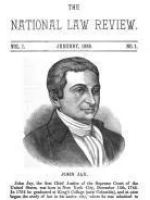On January 1, 2016 Elizabeth “Betty” Temple became the Chair and CEO of Womble, Carlyle, Sandridge & Rice, a law firm with over 500 lawyers and 13 offices on the east coast. Temple joined the firm in the late 80’s and has demonstrated a commitment to innovation and meeting client needs. She plans on focusing on diversity in leadership and innovation for clients in her role as the first woman CEO of Womble Carlyle.
Temple is one of a handful of women at the helm of a major law firm. Prior to being elected Chair, Temple held several leadership positions within the firm including tenures on the Firm Management Committee, head of the Public Company Advisors Team, Chair of the firm’s Strategic Planning Committee, and most recently, Vice Chair.
As a corporate attorney, Temple plans to use her experience in boardrooms to help grow and innovate at Womble Carlyle. Temple says, “We are in a new era of the legal business. Successful firms of the future will combine traditional professionalism and client service with the best business approaches from the world of commerce.”
Temple says she plans on creating an Innovation Center, with lawyers and senior professional staff focused on fostering efficient, business solutions coordinated with client needs and wants. Temple sees this as an extension of what Womble already does: “Our lawyers always have innovated on behalf of clients,” Temple said. “The difference with our Innovation Center will be the structure, discipline and client input we bring to the process.”
The National Law Review had the opportunity to speak with Ms. Temple and ask her a few questions about the state of law firms and the changes facing the legal industry.
1. What do you see as the biggest challenge facing law firms today?
A: I’ve spent my career working closely with companies of all sizes and levels of complexity and I’ve found that the most successful businesses have a few things in common – most notably, they innovate and adapt. The legal industry struggles with this sometimes and law firms can be their own worst enemy. Ultimately, it is our clients and their needs that shape the direction of where the industry is going and I don’t think we are always listening carefully or deeply enough. In all of the data I see, clients frequently complain that their lawyers do not understand their business and yet, when you look at law firm websites, they all talk about how well they understand their clients’ needs. That is a serious disconnect. Getting creative and aligning our services with our clients’ true needs seems to be the greatest challenge law firms face, but it is also a tremendous opportunity. We’ve done this by being willing to step outside the traditional billable hour and develop alternative fee plans that better serve our clients and make our attorneys more accessible while growing revenues. We also continue to integrate and develop new technology into our practices (such as our document management system, VPN, and mobile device support) at level beyond similarly positioned firms. We’ve seen how well those kinds of investments pay off.
2. In your view, what are some ways law firms need to change to adapt to the challenges facing the industry?
A: We all have an individual responsibility to put in the time and effort to really understand our clients’ businesses, but truly understanding clients’ needs and the direction of those needs tends not to be something you can do on your own. In my experience, amazing things happen when a talented and diverse group of lawyers and staff come together to think creatively about what clients need and don’t need. Law firms who understand the value of teamwork have an edge over those who don’t. We also have to competently and expertly address those needs as they arise, so cultivating deep expertise with a commitment to quality is more important than ever. There may have been a day when partners could let associates find their own way. In today’s environment, we can’t afford to leave anything to chance. We must be constantly investing in our people and creating the opportunities for the current generation and the next generation to succeed.
3. Many law firms can be “low trust environments,” in your role, how do you build trust? What actions do you take to build confidence in your role and the executive committee? How do you build trust among the firm’s attorneys?
A: I’ve been with Womble Carlyle for more than 25 years and during most of that time our turnover rate has remained below the industry average. I think that’s due in part to the culture of trust that exists here. It starts with a common understanding of a firm’s core values and what constitutes good and bad behavior. When those values reinforce the idea that we treat each other as we would our best clients, I can expect that others will show concern for me. When I feel that, I am more likely to trust others, even if I don’t know them well. Also, when a firm has a steadfast commitment to hiring high-performance lawyers and staff, I know I can expect a certain level of quality interaction with my colleagues from the start. Our firm leadership is also inclusive and transparent in its information sharing, which gives people a sense of stability and reduces suspicion of hidden agendas. People invest in an organization when they feel the organization is invested in them. That means creating profit while building our culture and following our values. It means creating meaningful opportunities for attorneys and staff and aligning them with clients who will benefit most from their talent. It’s about infusing the law with the human spirit.
4. Clients are becoming more savvy consumers of legal services and demanding more from their law firms. In your view, what are ways law firms can rise to this challenge?
A: We’ve found that we can learn quite a bit from our corporate clients. Creating diverse teams and incorporating a range of perspectives, understanding all aspects of a clients’ issue, clarifying a vision of success, developing a thoughtful plan about how we will pursue engagements, and understanding the risks to that plan are all important. That’s why we’re taking a project management approach to many client matters today. We start by teaming with clients to develop a strategic plan that includes sound budgets, realistic schedules and cooperative benchmarks. This ensures staffing is at an appropriate level for each matter and that the attorneys working on the project are the ones best suited for it. Also, where it is acceptable, we’re integrating our professional staff deeper into client work. All of this has resulted in our firm delivering results to clients that are more efficient, cost-effective, and strategic. I can’t tell you how much positive feedback we’ve gotten because of this.
5. Do you have any thoughts on how to integrate younger attorneys into leadership positions in the law firm?
A: This goes back to the significance of supporting each individual attorney. Along with sponsoring our attorneys’ involvement in professional organizations and community groups, we also encourage young attorneys to create their own leadership opportunities. Several years ago our firm created “Women of Womble” as an internal professional development group focused on mentoring young attorneys and providing networking opportunities. WoW, as we like to call it, has been very successful and many of the women involved have gone on to leadership roles both here at Womble Carlyle and elsewhere.
6. How do you convince leadership at law firms to think beyond their K1?
A: As one of our former managing partners once said, “Profits follow passion.” If a firm can manage all of the other things we’ve talked about, this piece will fall into place. If an attorney has a principled and passionate plan for helping good clients solve their most intractable problems, then the firm leadership has a responsibility to support them rather than focus on immediate profitability. We shoulder that responsibility with our attorneys because we care about their growth. This is all about our partners pouring in sweat equity and living our Womble values. When that level of partnership exists, the work we do builds something that withstands the test of time and becomes a resource clients will always trust.




 />i
/>i

